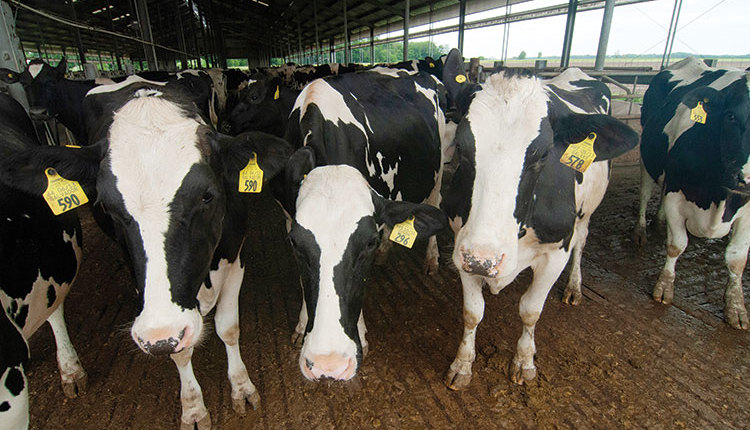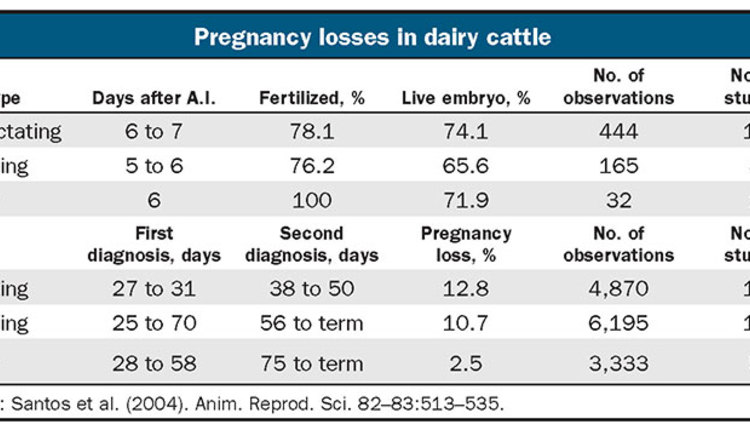The author is a professor of animal sciences and industry at Kansas State University, Manhattan.

In 1979, prostaglandin F2a became available, giving us a new tool to induce estrus in cows and heifers. Many earlier studies demonstrated that prostaglandins would regress the corpus luteum and cause the majority of cows to come in heat in two to five days. Shortly thereafter in 1980, GnRH products were introduced to the market, giving us another tool to induce ovulation and treat follicular cysts.
In the early 1980s, simultaneous discoveries of how follicles develop in wave-like patterns were made by animal scientists in New York and Wisconsin. The newest tool that facilitated this knowledge was the ultrasound machine. For years, ultrasound had been used in obstetrics or OB-GYN clinics to monitor human pregnancies. But now, using transrectal probes in cattle, not only could one follow development of individual follicles and luteal structures, but the early embryo could be visualized by Day 25 to 30 and the calf could be sexed in utero by Day 60.
Pioneering activity
Discovery that cows escalate their activity (walking) approximately 100% to 200% when in heat led to the first patent issued for a pedometer in 1983 that could be affixed to the neck or the pastern on the cow’s leg. A number of manufactured pedometers hit the marketplace, but it was the 3-D accelerometer incorporated into neck- or ear-affixed smart tags in 2005 that improved the accuracy of detecting activity and estrus.
Then, small microphones affixed to these neck-mounted tags could detect eating activity and rumination sounds. The first ear tag-based health and activity monitoring device came about in 2011. It brought together multiple measures such as ear skin temperature, resting, eating, rumination, and heat detection. Applying sophisticated algorithms allowed predictability of heat, cows off-feed, and sick cows.
A new combination
It was not until the mid-1990s when researchers developed programs that combined use of prostaglandins and GnRH to control follicle development, corpus luteum regression, and ovulation. A number of researchers pioneered the way with early studies in the late 1980s that led to what we now know as ovsynch. Ovsynch first was tested in 1995, followed with the first presynch programs in 1999 and resynch programs in 2000.
Another estrus-synchronization tool came to the market in 2003 known as the CIDR (controlled internal drug releasing) insert. Even before the CIDR appeared in North America, an earlier progesterone-releasing intravaginal device (PRID) had been tested in Europe, Canada, and the U.S. This new tool has become invaluable for a number of applications, including heat synchronization of recipients before embryo transfer.
For years, many researchers tried unsuccessfully to sort X and Y chromosome-bearing sperm collected from bulls and other farm animal males. But the only successful technology that eventually worked was cell-sorting flow cytometry. When sex-sorted semen was first commercially available in 2005, it revolutionized how replacements were produced on dairy farms.
Although its fertility is less than what is achieved with conventional semen, the X-bearing chromosome sperm produce heifers with 90% accuracy. Sexed-sorted semen is now being used in both heifers and the best lactating cows to produce the herd’s future replacements.
Only recently have more dairy producers begun to use beef semen in their less productive cows. A recent study demonstrated that fertility of beef semen was not different from that of conventional dairy semen in on-farm use in dairy cows. Using beef-on-dairy has become common enough that one major bull stud actually sold more beef semen to dairy producers in 2019 than they sold to beef producers!
Pregnancy diagnosis by chemical means is becoming more accepted, too. In 1992, the first commercially available pregnancy test was marketed as BioPRYN. In the past 10 years, other similar pregnancy tests have become available at commercial labs or at DHI laboratories as another service to dairy producers. The pregnancy-associated glycoproteins (PAG) that are measured in both blood and milk allow for an early pregnancy test starting at Day 28 to 30 after insemination.
A whole host of other embryo technologies have been around for a number of years. Such techniques include in vitro fertilization (IVF), in vitro maturation (IVM) and in vitro culture (IVC) of early embryos, nuclear transfer, embryo genotyping, and multiple ovulation embryo transfer (MOET). These are likely to become more commonplace in the future. None of which, however, has led to more genetic progress in dairy cattle than our traditional A.I. breeding!
One eye on the horizon
Breakthroughs in semen storage in the future may eliminate the need for liquid nitrogen tanks. A recent report stated that a Waygu calf was conceived with freeze-dried semen that had been held in frozen storage at a temperature of 30°C (-22°F). I expect many more discoveries will appear in the future.
This will be my last regular contribution to the A.I. breeding column in Hoard’s Dairyman. I have enjoyed sharing with you the wonderful world of reproductive biology as it relates to dairy cattle. I have learned much from you, as many have interacted with me since my first regular column appeared in June 1992. I wish you success in your dairy enterprise. Happy A.I. breeding or whatever the future brings!










